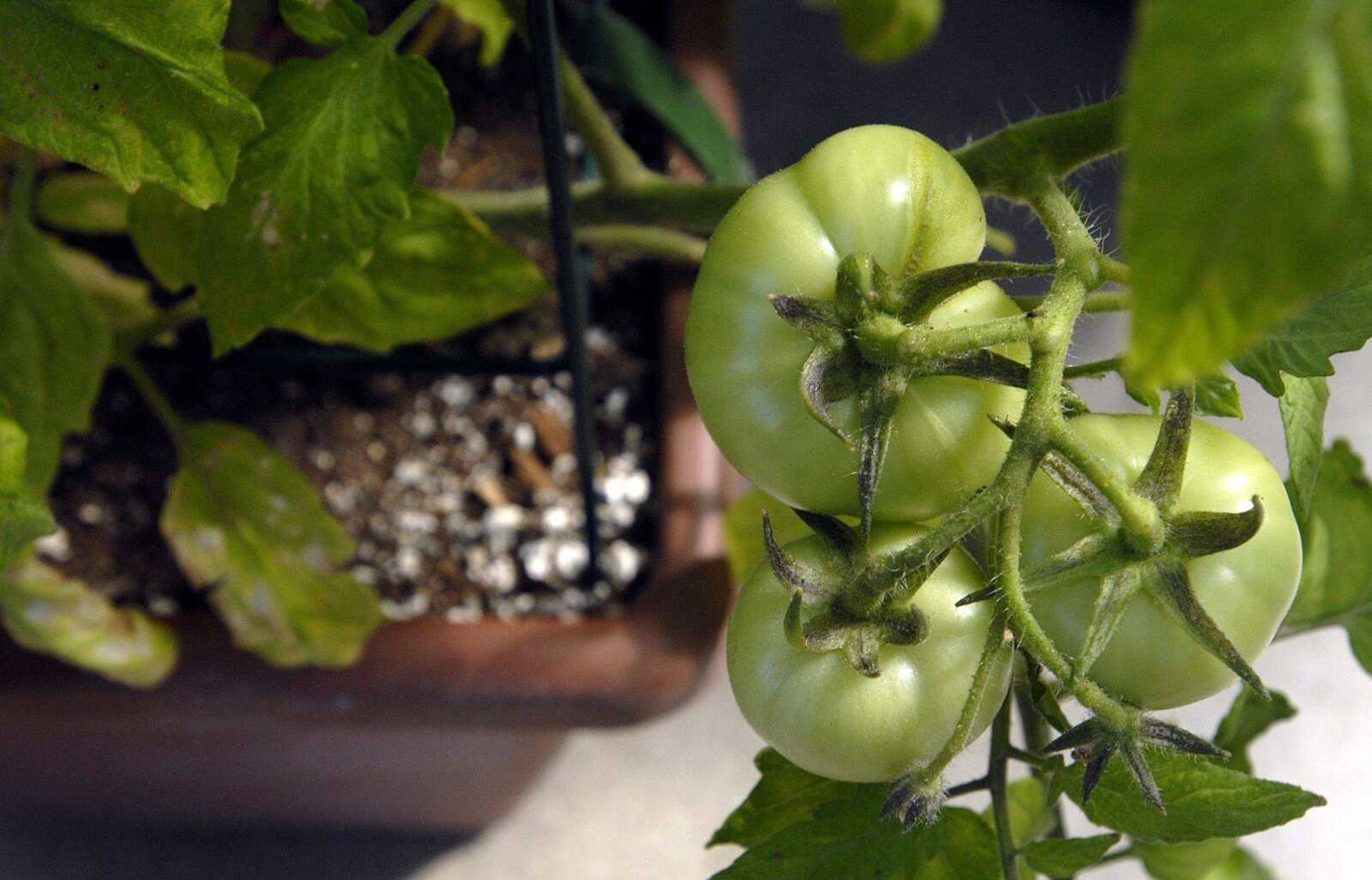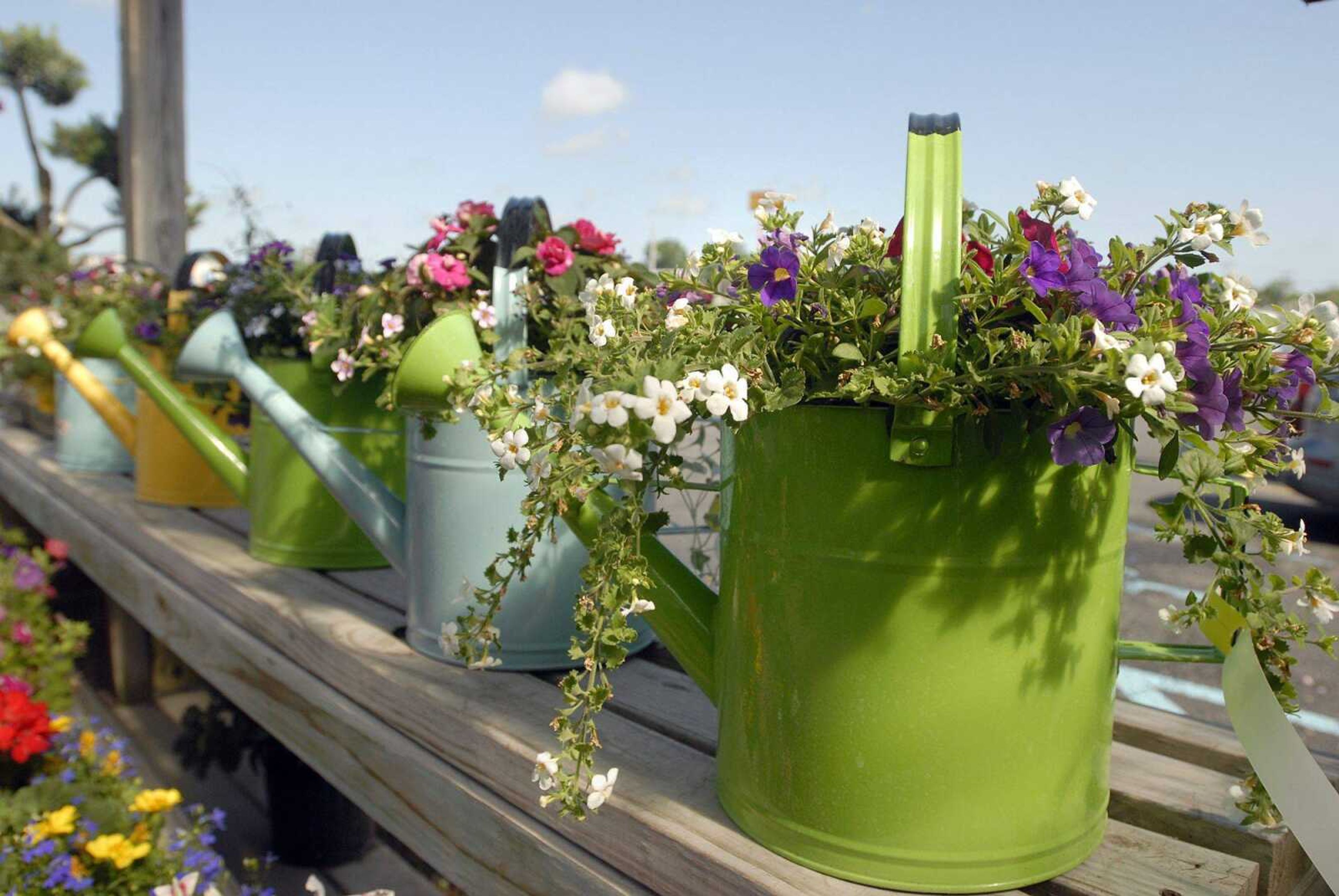A common lament this spring because of all the rain is that few gardeners can get into their vegetable or flower garden to get any planting done. The soils are just too wet. In addition, about the time it looks like soils are going to dry out, it rains again.
I would like to suggest that if you are in this predicament, you might try container gardening. This will help you in two ways. First you can get your garden started now when soils are still wet. You can eat veggies and enjoy color early in season from the container garden. Second, when your soils dry out, you can plant your veggies and flowers for a late-summer and fall crop.
If your garden soils continue to stay wet, at least you will have a few veggies to eat and some colorful flowers to look at during this growing season. What an unusual year we are having.
There are a few things to keep in mind when gardening in a container. Select a container that is not too large for the plants you want to grow. For example, if you put a small tomato plant into a 40- gallon pot you are going to have trouble properly watering the plant. The plant root mass will not be large enough to fill up the soil in the pot. Consequently, the soil that has no plant roots in it will stay wet, while the soil saturated with plant roots will dry out quickly. Because some of the soil stays wet all the time, the roots of your tomato will begin to rot.
Use a good potting mix, not a potting soil in your container. The potting mix will drain well while a potting soil will tend to stay wet. Roots in a soil that constantly stays wet will have a tendency to rot.

When selecting a potting mix stay away from a mix that has moisture control in it. If we get much rain during the growing season, the mix will remain wet and plant roots will rot. The potting mix with moisture control works well in an arid region where there is little rainfall, but not in Southeast Missouri where we can get 20 inches of rain in one week. You want to control watering, not Mother Nature.
I also hesitate to recommend a potting mix that contains slow release fertilizers in them. Several growers have told me that they will occasionally get plant burning when using these mixes. They prefer to be in control of fertilization, instead of a potting mix company being in control of fertilizing.
I would suggest that you starting fertilizing at planting with a soluble fertilizer such as a 9-59-8. The high middle number, phosphorous, will encourage the plant to put most of its growing energy into root production, the foundation of good plant growth. Then alternate the 9-59-8 with a 20-20-20 during the rest of the growing season on a weekly or biweekly schedule.
Most potting mixes are acidic. Therefore it is important to add lime to the soil to keep the soil pH between 6.0 and 7.0. The correct pH is important because the pH determines whether plant nutrients are available to the plant.
For example, the incorrect soil pH and lack of calcium quite often shows up as blossom end rot in tomatoes.
Correct watering is an important part of container gardening. Most growers will tell you that they kill more plants with a watering hose than with anything else.
When watering, water the container so that the potting mix is saturated. You want every pore in the soil to be full of water. Then let excess water drain out of the container. Most importantly do not water the plant, even if the plant looks droopy, until you feel the soil getting dry. Let the soil tell you when to water, not the looks of the plant.
Don't say the heck with it and decide not to plant a garden this year because of all the rain.
Enjoy a smaller garden with the help of containers.
You can still enjoy caring for plants, enjoy the color of flowers, and savor the flavor of home grown vegetables even if you can't get into your garden.
Send your gardening and landscape questions to Paul Schnare at P.O. Box 699, Cape Girardeau, MO 63702-0699 or by email to news@semissourian.com.
Connect with the Southeast Missourian Newsroom:
For corrections to this story or other insights for the editor, click here. To submit a letter to the editor, click here. To learn about the Southeast Missourian’s AI Policy, click here.










